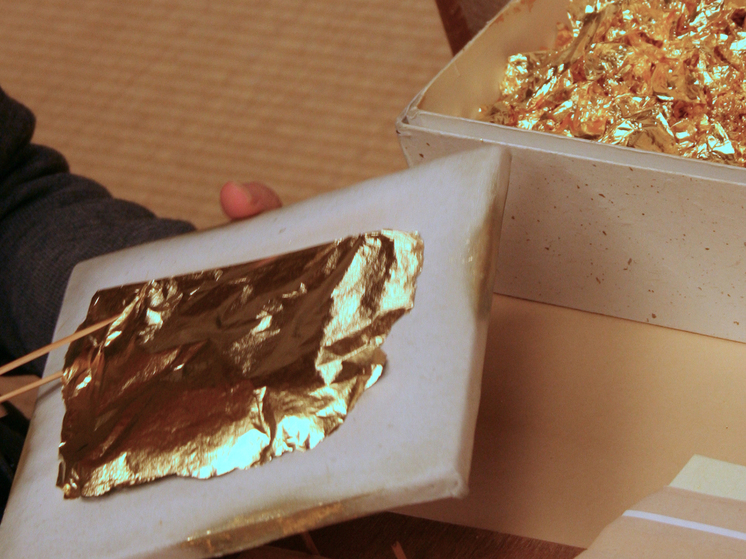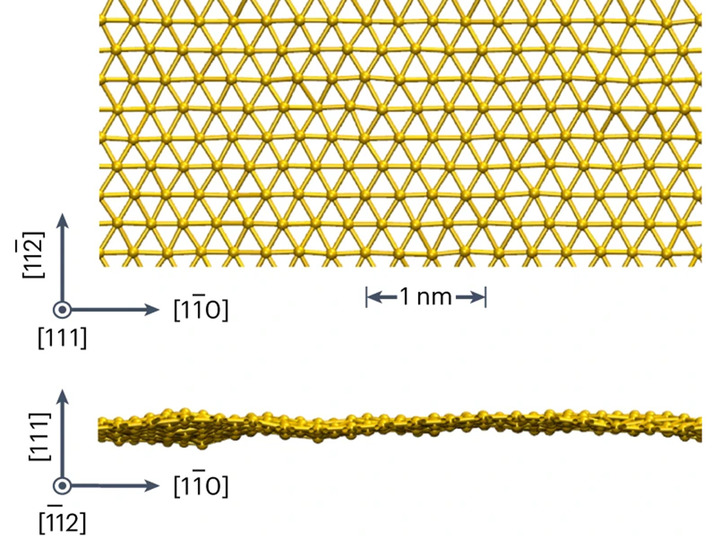The new two-dimensional material will be useful in both electronics and chemistry
A gold plate one atom thick (!) was first created by Swedish researchers from Linköping University. Gold, which has new properties, was called golden by analogy with graphene. We talked about the new material with the director of the Institute of General and Inorganic Chemistry of the Russian Academy of Sciences, corresponding member of the Russian Academy of Sciences Vladimir IVANOV.

Let us recall that the first two-dimensional material graphene was created in 2004 by Russian-born scientists Andrei Geim and Konstantin Novoselov. In fact, this is something that cannot be seen with the naked eye — a layer one atom thick, exfoliated from the well-known graphite. As Vyacheslav Tulin, director of the Chernogolov Institute for Problems of Microelectronics and Highly Pure Materials Technology of the Russian Academy of Sciences, where the scientists worked, once told me, they managed to obtain something that no one, in fact, believed in: two-dimensional plates having only length and width, but completely devoid of thickness, or rather it exists — one atom.
Graphene, for whose discovery Geim and Novoselov received the Nobel Prize in 2010, has proven to be an excellent conductor of electric current for microelectronics. For its unique combination of elasticity and strength, it has even been proposed to be used in the production of body armor.
Since the creation of graphene, the idea of creating other two-dimensional materials has haunted scientists. They say that modeling on supercomputers has already predicted about a thousand similar ones, but not many have been implemented yet.
“Starting with the discovery of graphene, a two-dimensional modification of carbon, by Novoselov and Geim, a wide variety of two-dimensional materials began to attract the attention of researchers,” says Vladimir Ivanov. – Two-dimensional modifications of boron (borophene), germanium (germanene), silicon (silicene) and several other elements were obtained. Interest in such materials is fueled by their unique electronic properties and high mechanical characteristics, due to which they have good prospects for use in at least two important areas — microelectronics (including the production of quantum computers) and catalysis.
< /p>
– Two-dimensional materials are usually obtained this way. In a similar way, the first two-dimensional metallic material consisting of gold atoms, which was called “golden,” was recently obtained. More precisely, to prepare it they used a chemical etching technique similar to that used to develop patterns on Japanese blades.
 Golden monolayer.
Golden monolayer.
“It wasn’t easy to get a golden—it took a long time to select the composition for etching. Many attempts were unsuccessful, and instead of golden, ordinary gold nanoparticles were obtained. As a result, Swedish scientists first obtained a material in which layers of titanium carbide and gold alternated, and then very carefully etched the titanium carbide layer with a Murakami solution (an alkaline solution of potassium iron sulfide, which the Japanese used to etch patterns on blades), and separated the gold layer.
– Golden can be considered the thinnest example of gold leaf. Moreover, if the thickness of ordinary gold leaf sheets is about 100 nanometers, then a golden leaf has a thickness of only one gold atom, that is, less than 1 nanometer! As a result, the properties of golden differ significantly from the properties of gold.
– Golden has good prospects for use in environmental catalysis, for example, in the reaction of carbon dioxide conversion. In its presence, carbon dioxide will be converted into valuable organic compounds useful in industry. In addition to golden, other materials can be used as such catalysts, but there is hope that golden will be more effective. Perhaps there will be other ways to use it, but for now it is difficult to list them all, because only a few researchers have held it in the hands.
– This material cannot be called tangible, especially since So far, only small fragments have been obtained, which can only be seen in an electron microscope.
Personally, it seems very important to me that the first two-dimensional metallic material has been created. It is probably no coincidence that it is gold, since it is inert, and therefore stable in the air atmosphere, which is important for any practical application.























































Свежие комментарии